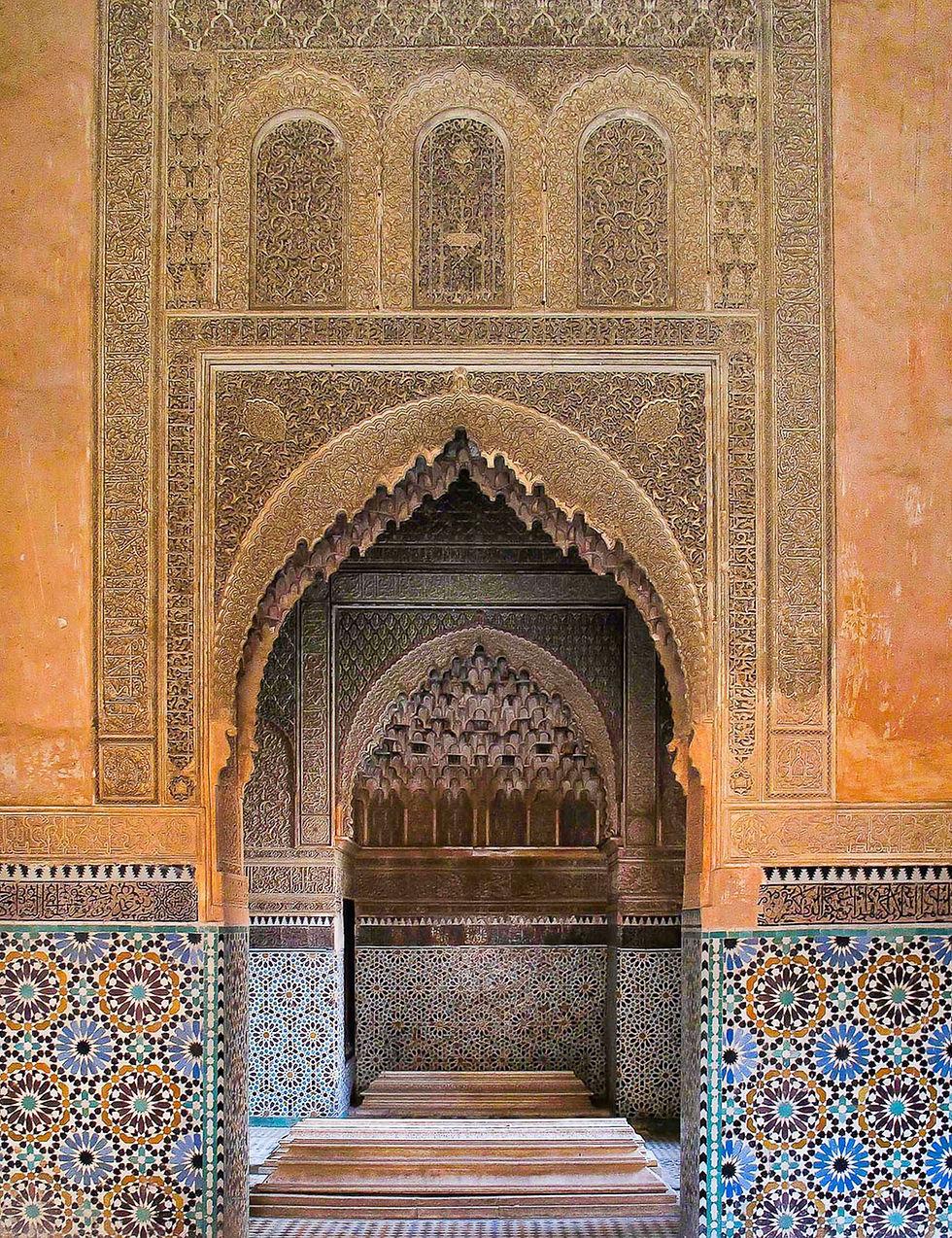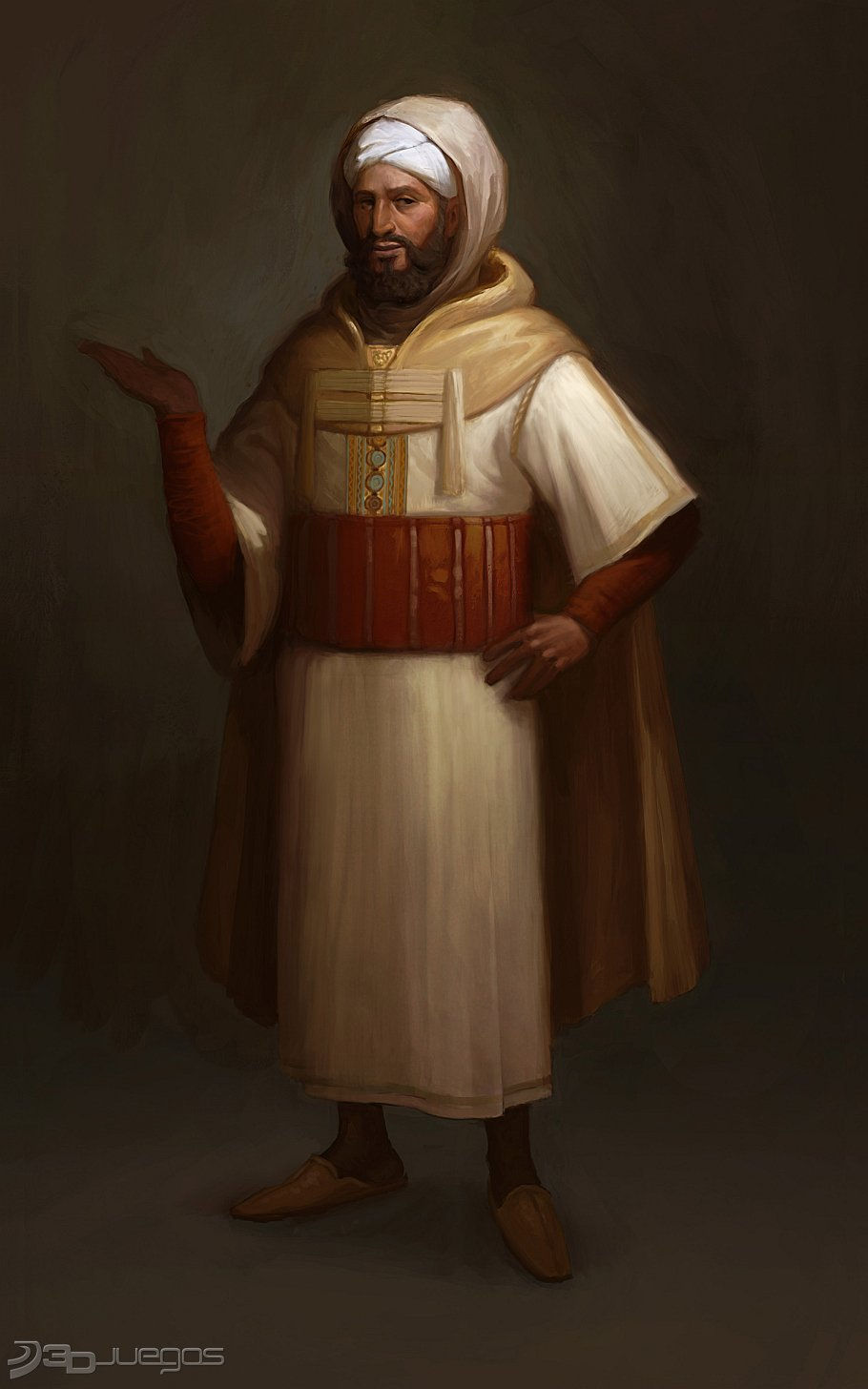The Saadian Tombs
- Pierre @ Riad Dar Chacha
- Dec 14, 2023
- 5 min read
Updated: Dec 29, 2024
Immerse yourself in Marrakesh's captivating history by exploring the prestigious Saadian Tombs. Nestled in the heart of the Kasbah citadel, these architectural treasures date back to the illustrious Saadian dynasty, in particular to the reign of Ahmad al-Mansur (1578-1603), whose Palace you can also visit. Admire their majestic location, just south of the magnificent Kasbah Mosque, in the heart of the royal quarter of the ochre city.

During your visit, be prepared to be dazzled by the sumptuousness of the decoration of this necropolis. The Saadian Tombs are much more than just a historic site; they are a veritable work of art. Their beautifully chiseled details and remarkable architecture make them a must-see attraction for visitors in search of beauty and history.
The Saadian Tombs are much more than just a historical site; they are a living testimony to the past grandeur of Marrakesh. Immerse yourself in this immersive experience and discover the city's royal heritage. An unforgettable visit awaits you in the heart of the Ochre City.
History:

The Pre-Saadian period:
Dive into the mysteries of the distant past as you explore this historic necropolis. The exact origins of this site remain shrouded in mystery, but one thing is certain: its history is rich and intriguing. Located on the edge of the qibla wall, in particular the south-east wall of the Kasbah Mosque, this site dates back to the time of the Almohad caliph Abu Yusuf Ya'qub (al-Mansur), at the end of the 12th century (1185-1190).
It is highly likely that this site was used as a necropolis from the Almohad period onwards, although there is no evidence of important personalities being buried here (Almohad leaders were generally buried in Tinmal). However, in the 14th century, during the period of the Marinid dynasty, the necropolis was the temporary burial place of Sultan Abu al-Hasan in 1351. Following his death in the High Atlas Mountains, Marrakesh was the nearest city for his burial, in accordance with Islamic tradition. A few months later, his body was moved and reburied in the Merinid royal necropolis at Chellah, near Rabat. A marble tombstone with a long inscription bears witness to his first burial at the Kasbah necropolis in Marrakesh, a historic relic that lives on in the three-niche chamber of the Saadian Tombs.
Over time, the necropolis also became the burial place of the Hintata emirs, who ruled the Marrakesh region from the mid-15th century until the 1520s. Epitaphs still mark their presence today, adding a fascinating layer to the history of this place.

Saadian period:
The fascinating history of this necropolis, although generally dating from the Saadian period, remains shrouded in mystery as to the chronology and attribution of the various constructions. However, thanks to the efforts of the eminent historian Gaston Deverdun in 1959, a benchmark chronology and analysis was established, based on solid arguments and convincing evidence.
The necropolis consists of two main structures: one to the east, surrounded by lush gardens on either side, and the other to the west, adjacent to the current visitor entrance. The eastern mausoleum, originally a simple square chamber adjoining the southern wall of the Kasbah mosque, is thought to have been built by the second Saadian sultan, Moulay Abdallah al-Ghalib, between 1557 and 1574. He seemed to want to honour his father, Mohammed ech-Sheikh, founder of the dynasty, who was buried in 1557 in what was probably a modest tomb. Abdallah, for his part, had been resting beside his father since 1574, in the new mausoleum he had had built. A dedicated marble panel was placed at the head of his tomb, but this was later moved, for unknown reasons, to the chamber of three niches in the western building.

Under the reign of Ahmed al-Mansour, another son of Mohammed ech-Sheikh, the necropolis underwent a significant construction phase between 1578 and 1603. Following the death of his mother, Lalla Mas'uda, wife of Mohammed ech-Sheikh, in 1591, Ahmed al-Mansour decided to have her buried in the same mausoleum chamber as his father. It was at this time, or shortly afterwards, that he undertook the transformation and enlargement of the mausoleum. The decoration of the existing chamber was reworked, and two rectangular loggias were added on the east and west sides. A much larger rectangular chamber, now known as the Great Chamber, was created to the south, directly linked to the other three chambers. It is highly likely that Ahmed al-Mansur intended to rest here for eternity. Two dedicatory marble panels, commissioned by the Sultan, were intended to be placed at the head of the tombs of his father (Mohammed ech-Sheikh) and his mother (Lalla Mas'uda).
For reasons that are still unknown, and at an uncertain date, Mohammed ech-Sheikh's dedication panel was moved to the west building, where it can still be seen today, on the rear wall of the room with the twelve columns. The panel dedicated to Lalla Mas'uda remained near her tomb, although it may also have been moved. This necropolis, steeped in history and mystery, invites you to immerse yourself in the fascinating Saadian era.
📍 where to find the Saadian Tombs: click here for location
What's on offer?
When you visit the Saadian Tombs in Marrakesh, discover a mausoleum in three parts, each offering a unique and captivating experience. Don't miss the Hall of the Twelve Columns, one of the jewels of this site. You will be dazzled by the tomb of Sultan Ahmed El Mansour, crowned by a sumptuous Atlas cedar dome with finely chiselled stucco work.
The Saadian Tombs are full of tombs magnificently decorated in Italian Carrara marble. Marvel at the meticulous details adorning the walls and columns in Hispano-Moorish style, the predominant art of 16th-century Morocco. Some royal tombs are embellished with poetic epitaphs, such as that of Princess Zohra, which reads: "Here is the tomb of the noble lady, new moon, wonder of virtues".
After exploring the Hall of the Twelve Columns, continue your visit by passing by the chapel and don't miss the outdoor gardens. Watch the storks that like to nest here at the entrance to the site. The Saadian Tombs and their gardens were restored in the 1920s, allowing you to immerse yourself in a bygone era, that of the 16th and 17th centuries.
If you have a passion for history, a visit to the Saadian Tombs is a must. We strongly recommend that you do so in the company of a competent guide, who will enlighten you about the era and the lives of the personalities buried in this mausoleum. The monument is ideally located just 100 metres west of the El Badi palace, close to the Kasbah mosque, both must-see destinations during your visit to Marrakesh.
Our Riad:

Immerse yourself in an authentic and exotic experience in the heart of Marrakesh by choosing Riad Dar Chacha.
Nestled in the narrow streets of the medina, our Riad offers a haven of peace where you can recharge your batteries and relax. Explore our 150 m2 garden terrace, a great place to soak up the enchanting atmosphere of Marrakesh and plan your escapades to the historic treasures of the medina.
Our dedicated team is always on hand to ensure your stay is a memorable one. Experience the perfect harmony of comfort and charm at Riad Dar Chacha, for an unforgettable experience in Marrakesh.
Contact us for a quote: click here.
© P&E Invest Maroc

Comentários